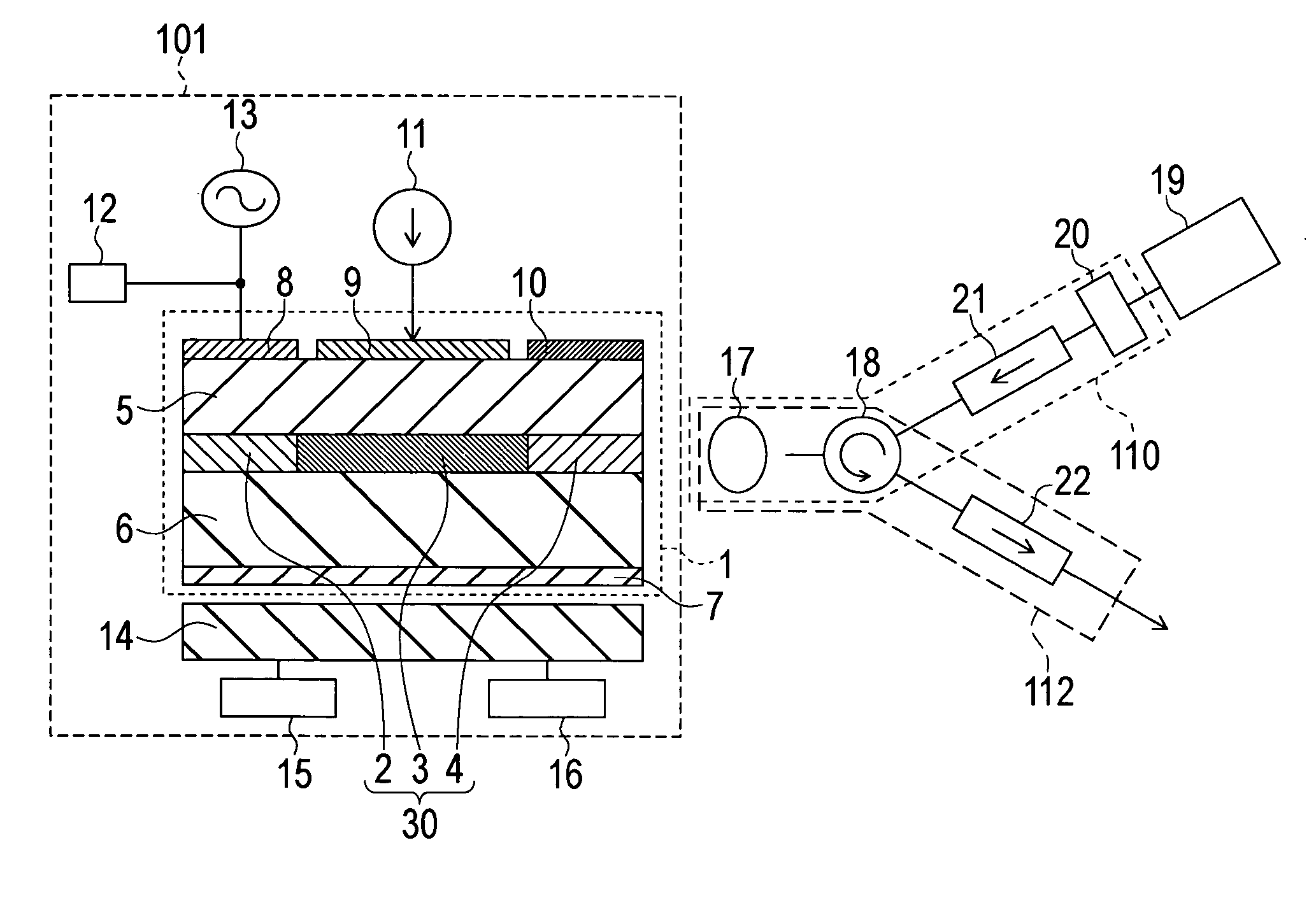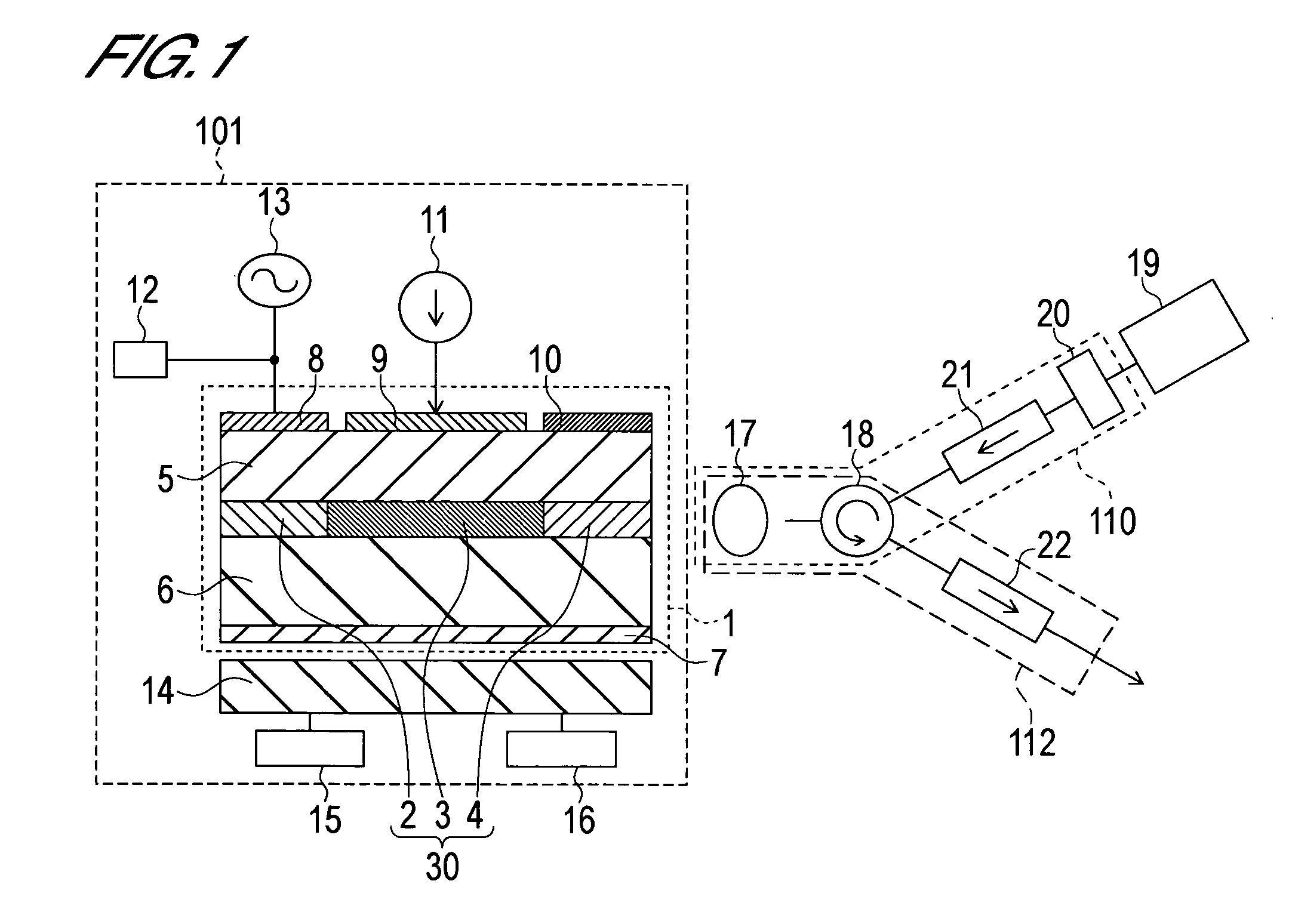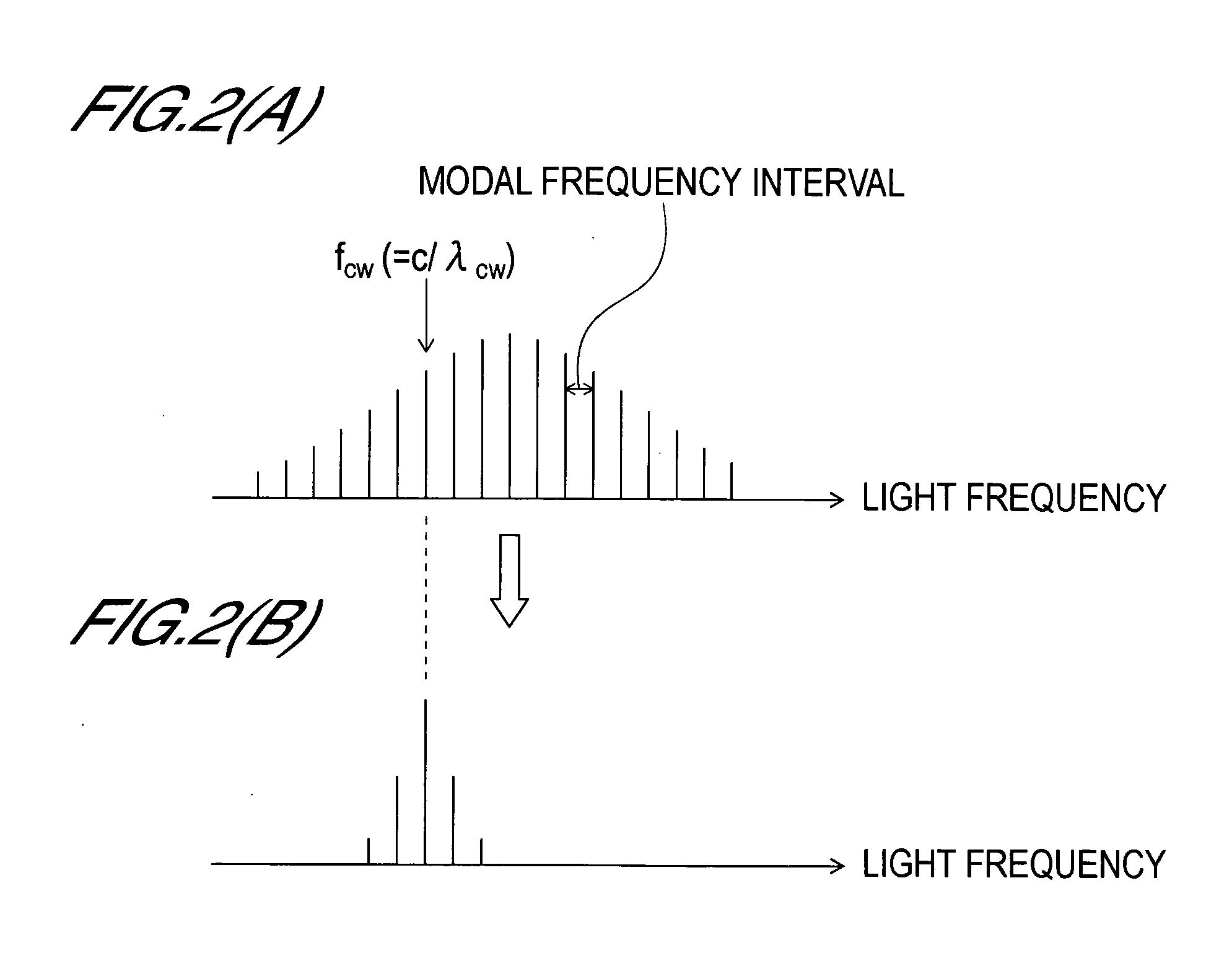Mode-locked laser diode device and wavelength control method for mode-locked laser diode device
a laser diode and wavelength control technology, applied in the direction of laser details, semiconductor lasers, electrical apparatuses, etc., can solve the problems mechanical instability, and large and achieve the effect of increasing manufacturing costs, increasing manufacturing costs, and increasing the size of laser diodes
- Summary
- Abstract
- Description
- Claims
- Application Information
AI Technical Summary
Benefits of technology
Problems solved by technology
Method used
Image
Examples
first embodiment
[0068] (Configuration)
[0069] The configuration of the wavelength variable MLLD of the first embodiment of the present invention will be described with reference to FIG. 1. The MLLD device of the first embodiment comprises an MLLD 1, CW light source 19, first optical coupling means 110 and second optical coupling means 112. And the optical pulse generation section 101 is constructed including the MLLD 1.
[0070] The MLLD 1 further comprises an optical guide30 where the optical gain area 3, in which population inversion is created, and the optical modulation area 2 having a function to modulate the light intensity and passive wave-guiding area 4, are laid out in series, and this optical wave guide 30 propagates the oscillation light. The passive wave-guiding area 4 is made of transparent material which oscillation light of the MLLD 1 transmits through. In the first embodiment, the optical wave guide 30 created in the MLLD 1 is comprised of three areas: the optical gain area 3, optical...
second embodiment
[0136] (Configuration)
[0137] The configuration of the MLLD device according to the second embodiment of the present invention will now be described with reference to FIG. 8. The difference from the first embodiment is that the oscillation wavelength adjustment means is formed in the passive wave-guiding area 4. Specifically the oscillation wavelength adjustment means created in the passive wave-guiding area 4 is structured such that the current can be injected into the p-i-n junction created including the passive wave-guiding area 4 of the optical wave guide 30 by the second current source 23 via the p-side electrode 10 and the n-side common electrode 7. This p-i-n junction is created by the p-type clad layer 5, passive wave-guiding area 4 of the optical wave guide 30 which is the i-layer (intrinsic semiconductor layer) and n-type clad layer 6. In other words, the difference of this embodiment from the first embodiment is that the means for injecting current into the p-i-n junction...
third embodiment
[0160] (Configuration)
[0161] The configuration of the MLLD device according to the third embodiment of the present invention will now be described with reference to FIG. 11. The difference from the second embodiment is that the oscillation wavelength adjustment means is constructed such that the reverse bias voltage can be applied to the p-i-n junction comprised of the p-type clad layer 5, passive wave-guiding area 4 of the optical wave guide 30, which is the i-layer (intrinsic semiconductor layer) and n-type clad layer 6 by the reverse bias voltage source 24 via the p-side electrode 10 and the n-side common electrode 7. In other words, the difference of this embodiment from the first embodiment is that the means for applying the reverse bias voltage to the p-i-n junction is included. The rest of the configuration is the same as the MLLD device in the first embodiment, so redundant description is omitted for identical parts.
[0162] (Operation)
[0163] The MLLD device of the third em...
PUM
 Login to View More
Login to View More Abstract
Description
Claims
Application Information
 Login to View More
Login to View More - R&D
- Intellectual Property
- Life Sciences
- Materials
- Tech Scout
- Unparalleled Data Quality
- Higher Quality Content
- 60% Fewer Hallucinations
Browse by: Latest US Patents, China's latest patents, Technical Efficacy Thesaurus, Application Domain, Technology Topic, Popular Technical Reports.
© 2025 PatSnap. All rights reserved.Legal|Privacy policy|Modern Slavery Act Transparency Statement|Sitemap|About US| Contact US: help@patsnap.com



